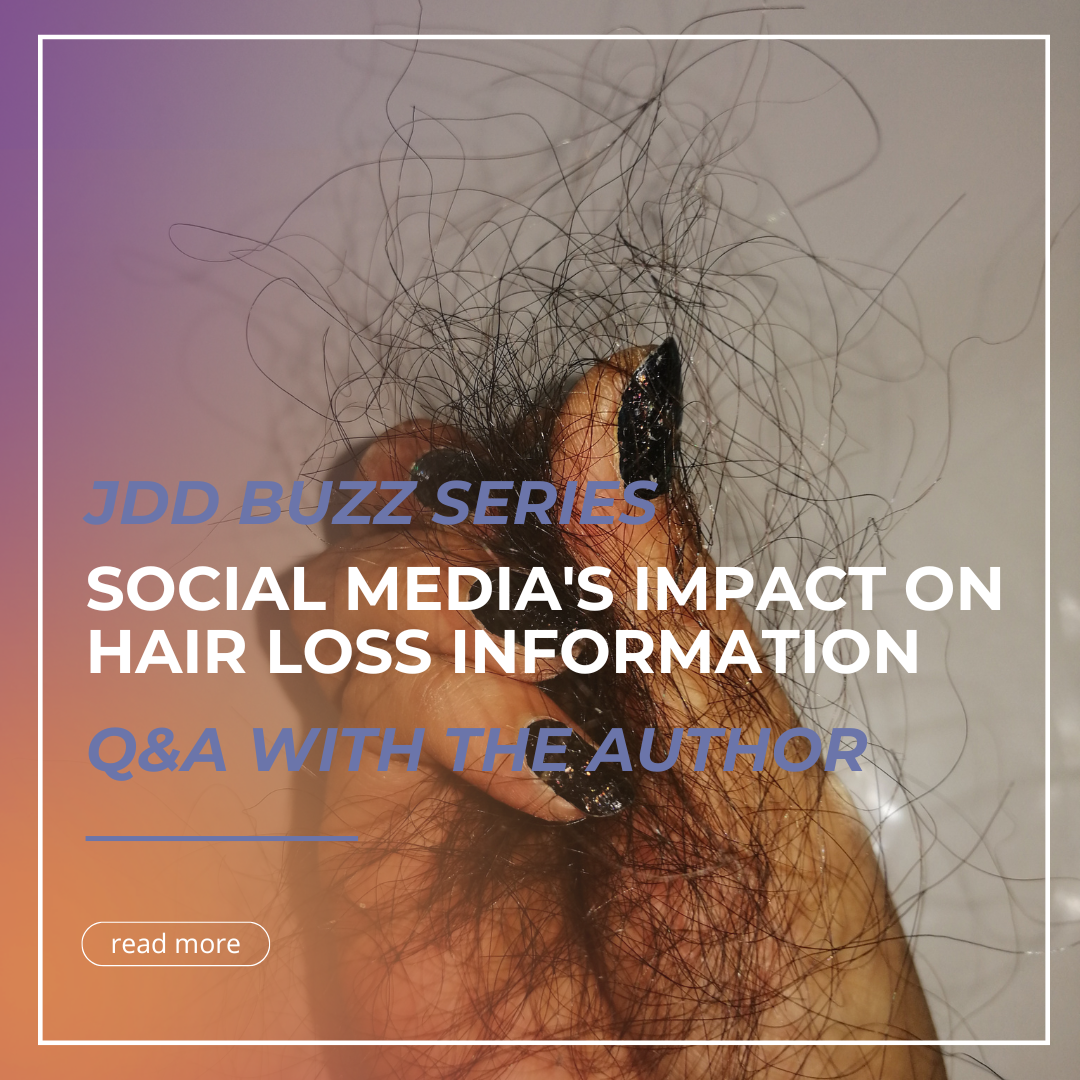Social media is a major source of medical information, including information about hair loss. How reliable is the hair loss material presented on social media, and how does this information impact patients? Those are some of the questions posed by researchers in a study published in the March Journal of Drugs in Dermatology.
I interviewed author Raymond Ezzat, third-year medical student at Georgetown University School of Medicine. In July, he will become a Hair Loss Research Fellow at Beth Israel Lahey Medical Center/Harvard Medical School.
What led you to investigate social media content on hair loss?
Hair loss is a deeply personal and often distressing condition, and with social media becoming a primary source of health information, patients are increasingly turning to these platforms for guidance. However, the unregulated nature of social media allows misinformation to flourish, shaping patient perceptions and influencing treatment decisions—sometimes in ways that undermine evidence-based care. Given the growing commercialization of hair loss treatments and the rapid spread of anecdotal claims, I wanted to systematically evaluate the quality of information patients are exposed to and assess its potential impact on clinical decision-making.
In this systematic review, you analyzed the reliability of hair loss information on social media. What did you find?
The overall quality of hair loss-related information on social media is concerning. The DISCERN scores, which evaluate reliability, ranged from 1.47 to 2.66—indicating poor to very poor content quality. The proportion of posts created by board-certified dermatologists was alarmingly low, varying between 0% and 18.9%. While some credible, evidence-based content exists, it is vastly overshadowed by anecdotal testimonials, influencer-driven promotions, and unverified commercial claims. This imbalance distorts public understanding of hair loss and can lead patients to ineffective or even harmful treatments.
Low-quality information has serious consequences. Patients may develop unrealistic expectations, delay seeking appropriate treatment, or spend significant money on unproven remedies. The algorithm-driven nature of social media favors emotionally compelling content over scientific accuracy, allowing misinformation to gain traction faster than evidence-based recommendations. This not only misguides patients but also reinforces stigma, increases anxiety, and diminishes trust in dermatologists and proven medical therapies.
Most of the information analyzed came from contributors who are not medical professionals. How does this affect patients?
When the majority of information is generated by non-experts—whether influencers, product marketers, or laypeople—the risk of misinformation skyrockets. These sources often lack medical context, misrepresent treatment efficacy, and prioritize engagement over accuracy. Patients exposed to such content may be misled into pursuing ineffective treatments, experience unnecessary emotional distress, or develop skepticism toward medical professionals. This underscores the urgent need for dermatologists to play an active role in digital education and counteract the spread of misleading narratives.
You found personal experiences were a common type of hair loss content on social media. How does this affect patients?
Personal narratives resonate deeply with audiences, offering support and a sense of shared experience. However, they also introduce significant bias. Individual responses to treatments vary widely, yet social media amplifies compelling success stories without context, often omitting the limitations of certain treatments or the role of concurrent therapies. This can create false hope, discourage patients from seeking medical advice, and lead to an overreliance on unproven interventions. While personal stories can be valuable, they should be accompanied by expert insight to provide accurate, balanced perspectives.
Was there variability in the reliability of content among the social media platforms studied? Were any platforms outliers in reliability of content?
Yes, reliability varied significantly across platforms. YouTube contained a slightly higher percentage of dermatologist-created content and had higher DISCERN scores compared to TikTok and Instagram. However, even on YouTube, dermatologist-led content represented only 18.9% of videos. TikTok, in particular, had a high volume of anecdotal content and influencer-driven posts, with significantly lower reliability scores. The platform’s short-form format makes it difficult to convey nuanced, evidence-based information, allowing oversimplified and often misleading narratives to dominate.
What are some opportunities for social media to become a more effective means of sharing hair loss information?
Social media has immense potential as a patient education tool, but improvements are needed. Increasing the presence of board-certified dermatologists on these platforms is crucial to elevating content quality. Additionally, social media companies should implement credibility markers, such as verified medical professional badges, fact-checking features, and algorithmic promotion of evidence-based content.
What are your recommendations for dermatology clinicians in counseling their patients who obtain their hair loss information from social media?
Rather than dismissing social media outright, clinicians should acknowledge its role and use it as a springboard for patient education. Patients often trust the content they find online, so instead of a confrontational approach, dermatologists should guide them toward reliable sources and use these discussions as opportunities to debunk misinformation. Encouraging patients to critically evaluate online claims, explaining why certain treatments lack scientific support, and providing curated lists of reputable resources can help patients navigate digital health information more effectively.
Are there any other key takeaways from your study that dermatology clinicians should know?
The biggest takeaway is that misinformation thrives in the absence of expert voices. Dermatologists have both an opportunity and a responsibility to actively engage in digital education. The demand for hair loss content is enormous, yet much of what patients encounter is shaped by marketing, personal bias, and non-expert opinions. By proactively contributing to these spaces, dermatologists can reclaim the narrative, reinforce science-backed treatments, and ultimately improve patient outcomes.
For the latest information in treating hair loss, attend Hair & Scalp Disorders: The Rx Pad & Beyond, a cutting-edge virtual conference designed to elevate the knowledge and competence of healthcare professionals in diagnosing, treating, and managing a wide spectrum of hair and scalp disorders across all patient populations. The half-day conference will be held on June 28. Registration is complimentary.
Did you enjoy this JDD Buzz article? You can find more here.

